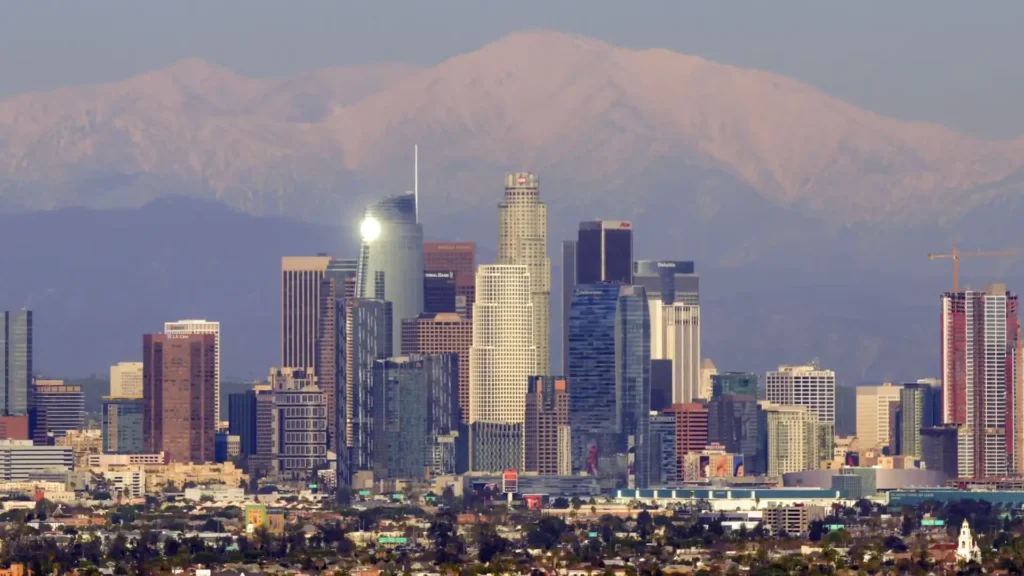California has long been recognized for its forward-thinking policies, groundbreaking innovations, and commitment to environmental responsibility. As the state continues to evolve, it remains at the forefront of the green revolution, pioneering efforts that are shaping not only its future but also setting an example for the rest of the world. From renewable energy initiatives to cutting-edge sustainable technologies, California is proving that growth and environmental stewardship can go hand in hand.
California’s Renewable Energy Leadership
One of the most significant ways California is leading the charge in sustainability is through its dedication to renewable energy. The state has set ambitious goals to reduce greenhouse gas emissions and transition to 100% clean energy by 2045. California has already made significant strides in expanding solar and wind energy, becoming a national leader in solar power installation. In fact, California produces more solar energy than any other state in the U.S., with its sunny climate making it an ideal location for solar farms and residential installations.
The state’s commitment to renewable energy is also evident in its push for electric vehicles (EVs). California has implemented policies that encourage the adoption of EVs, including rebates, tax incentives, and building an extensive network of charging stations. This effort is helping reduce emissions from one of the biggest contributors to air pollution: gasoline-powered cars. The future is electric, and California is paving the way toward cleaner, more sustainable transportation.
Green Building and Sustainable Architecture
In addition to renewable energy, California is also revolutionizing the way buildings are designed and constructed. With a focus on sustainability, many new buildings in the state are built with energy-efficient materials, advanced water conservation systems, and eco-friendly technologies. California’s strict building codes require that new homes and commercial structures meet high environmental standards, including the use of renewable energy sources and smart technology to reduce energy consumption.
The rise of “green buildings” in California is changing the architecture and construction industries, setting new standards for environmental design. The state is also promoting retrofitting older buildings to meet modern sustainability standards, helping to reduce carbon footprints across the state’s aging infrastructure.
Leading the Way with Waste Reduction
California’s sustainability efforts also extend to waste management and reduction. The state has implemented some of the most progressive recycling and composting programs in the nation. California’s “Bottle Bill” encourages the recycling of bottles and cans by offering redemption value for empty containers. The state is also making strides in reducing single-use plastics and promoting reusable alternatives.
In 2016, California passed Senate Bill 1383, a law that aims to reduce the amount of organic waste sent to landfills by 75% by 2025. This legislation targets food waste, which is one of the largest contributors to methane emissions, a potent greenhouse gas. By promoting composting and creating infrastructure for organic waste processing, California is working to reduce waste and minimize its environmental impact.
Innovation in Agriculture: Sustainable Farming Practices
Agriculture is an essential part of California’s economy, but the state’s agriculture industry is also leading the way in sustainable farming practices. California farmers are increasingly adopting water-saving techniques, crop rotation, and organic farming practices to conserve resources and reduce environmental impacts. With the state facing frequent droughts, water conservation has become a priority, and sustainable irrigation methods are helping ensure that California remains a major agricultural producer while minimizing its environmental footprint.
California is also a pioneer in the development of plant-based and alternative protein sources, providing sustainable options to meet growing global food demands. The rise of plant-based food alternatives in the state is changing how people eat while reducing the environmental costs associated with traditional meat production.
Policy and Legislative Support for Sustainability
A major reason California is at the forefront of the green revolution is the state’s robust policy and legislative support for sustainability. California has long been a leader in environmental law, passing landmark legislation to protect natural resources and curb pollution. The California Environmental Quality Act (CEQA) requires environmental reviews for major development projects, ensuring that their impact on the environment is considered before construction begins.
In recent years, California has passed ambitious laws to limit carbon emissions, expand renewable energy production, and promote sustainable practices across industries. The state’s comprehensive climate change legislation, known as the California Global Warming Solutions Act (AB 32), set a target for reducing greenhouse gas emissions to 1990 levels by 2020, with future goals to reach even lower emissions levels. This commitment to environmental protection has helped California become a leader in green innovation and sustainability.
The Road Ahead: California’s Green Future
As California continues to lead the way in sustainability, it is also paving the path for the rest of the nation—and the world—to follow. The state’s ambitious goals, innovative technologies, and progressive policies are creating a blueprint for how other regions can transition to a greener, more sustainable future.
While challenges remain—particularly regarding water conservation, wildfire management, and addressing social inequalities in environmental access—California’s green revolution is a beacon of hope for what is possible when government, businesses, and residents work together toward a common goal.
California’s commitment to sustainability is more than just a trend—it’s a movement that will shape the state for generations to come. Whether you’re a resident, a business owner, or a visitor, there’s never been a better time to be part of the change and contribute to California’s green future.
Conclusion
From renewable energy to sustainable agriculture and innovative waste reduction programs, California is proving that a green future is possible. As the state continues to lead the charge toward sustainability, we can all take inspiration from its efforts and consider how we can contribute to making a positive impact on the environment. The green revolution is well underway, and California is at the forefront of creating a cleaner, more sustainable world for everyone.

